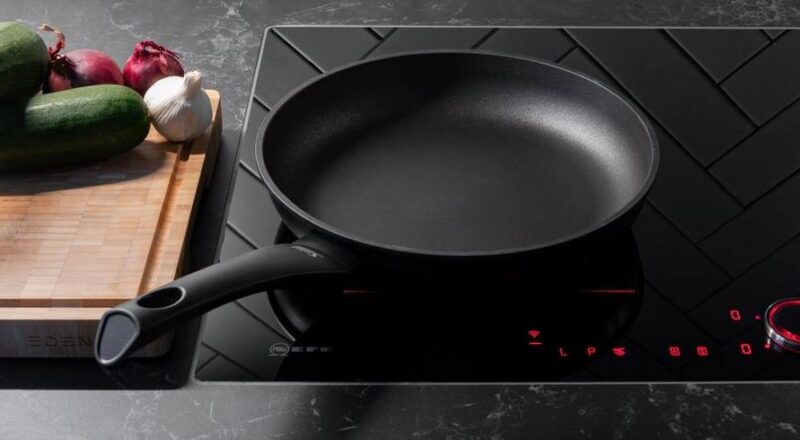Cooking enthusiasts and professionals alike know the charm of using a cast iron skillet. Its versatility and durability make it a staple in many kitchens. However, for optimal performance, especially on induction cooktops, proper seasoning is crucial. This article will guide you through the intricacies of cast iron seasoning specifically for induction cooking, ensuring your pan works efficiently and lasts a lifetime.

Understanding Cast Iron and Induction Cooking
In the realm of culinary arts, cast iron cookware holds a special place. Known for its excellent heat retention and even cooking surface, it’s a favorite among chefs. However, using cast iron on induction cooktops requires a few adjustments. Induction cooking uses electromagnetic fields to heat the pan directly, making it energy efficient and quick. To get the best out of your cast iron on induction, it must be seasoned correctly.
Why Seasoning is Important
Seasoning creates a natural, non-stick surface on your cast iron, which enhances its cooking capabilities. It involves applying a thin layer of oil to the pan and heating it until it bonds to the surface, forming a protective layer. This is especially important for induction cooktops, as it ensures even heat distribution and prevents cold spots.
Steps to Season Cast Iron for Induction
1. Clean Your Skillet: Before seasoning, ensure your cast iron is clean. Use warm water and mild soap if necessary. Avoid harsh detergents that can strip away the seasoning.
2. Dry Thoroughly: After cleaning, dry your pan completely. Water can cause rust, which ruins the seasoning.
3. Apply Oil: Use a high smoke point oil like flaxseed or vegetable oil. Apply a thin layer over the entire surface of the pan, including the handle.
4. Heat the Pan: Place your pan upside down in an oven preheated to 450F. Allow it to bake for an hour. This process bonds the oil to the iron, creating a durable seasoning.
5. Cool and Repeat: Let the pan cool in the oven. For best results, repeat the seasoning process two to three times.
Video Demonstrations
For visual learners, watching a cast iron seasoning video can clarify the process. Videos provide step-by-step instructions and show the nuances of proper technique. Look for videos that focus on induction-specific seasoning to ensure compatibility with your cooktop.
Common Challenges and Solutions
Uneven Browning
One common issue is uneven browning. This occurs when the heat distribution across the pan is inconsistent. Regular seasoning helps mitigate this issue.
Cold Spots
Induction cooktops are known for cold spots. Ensure your cast iron is centered on the cooktop and properly seasoned to avoid this.
Smoky Surfaces
Over time, cast iron can become smoky. This is usually due to residue buildup. Regular cleaning and seasoning prevent smoky surfaces.
Maintaining Your Cast Iron
After successful seasoning, maintaining your cast iron is key. Always clean it with warm water and avoid soap. Dry it immediately after washing to prevent rust. Store your cookware in a dry place.
Energy Efficiency on Induction
One of the advantages of induction cooking is its energy efficiency. Cooking with well-seasoned cast iron on induction can save energy by reducing cooking times. Learn more about energy usage.

FAQs
How often should I season my cast iron?
Ideally, season your cast iron after every use. This keeps the surface non-stick and protected.
Can I use any oil for seasoning?
It’s best to use oils with a high smoke point, such as flaxseed or vegetable oil.
Why is my cast iron sticky after seasoning?
A sticky surface indicates too much oil was used during seasoning. Ensure you apply a thin, even layer.
For more details on induction cooking, visit Wikipedia.
This article contains affiliate links. We may earn a commission at no extra cost to you.

